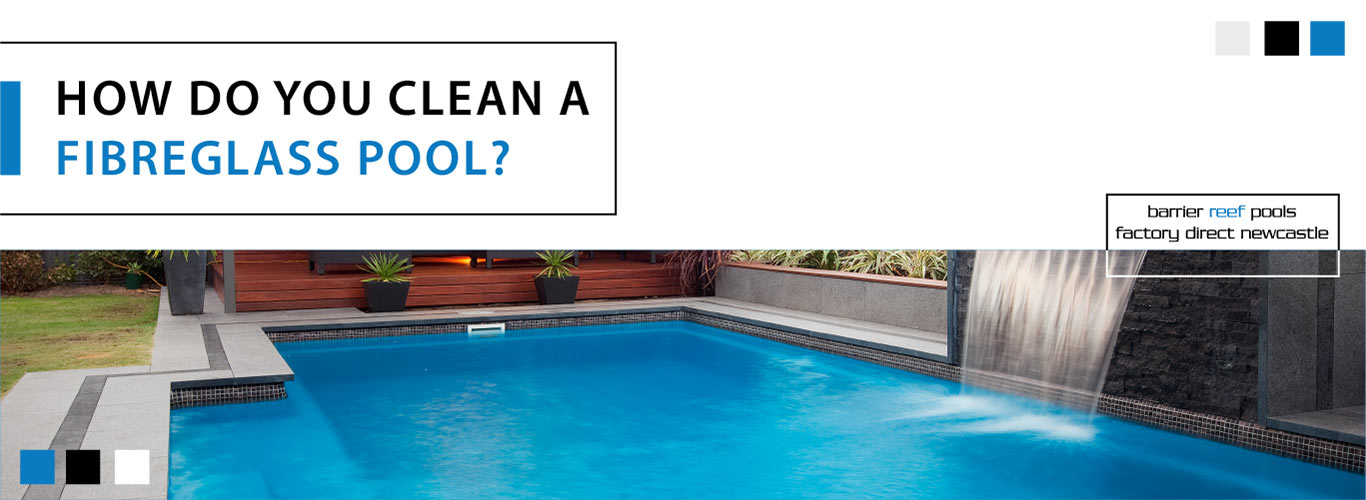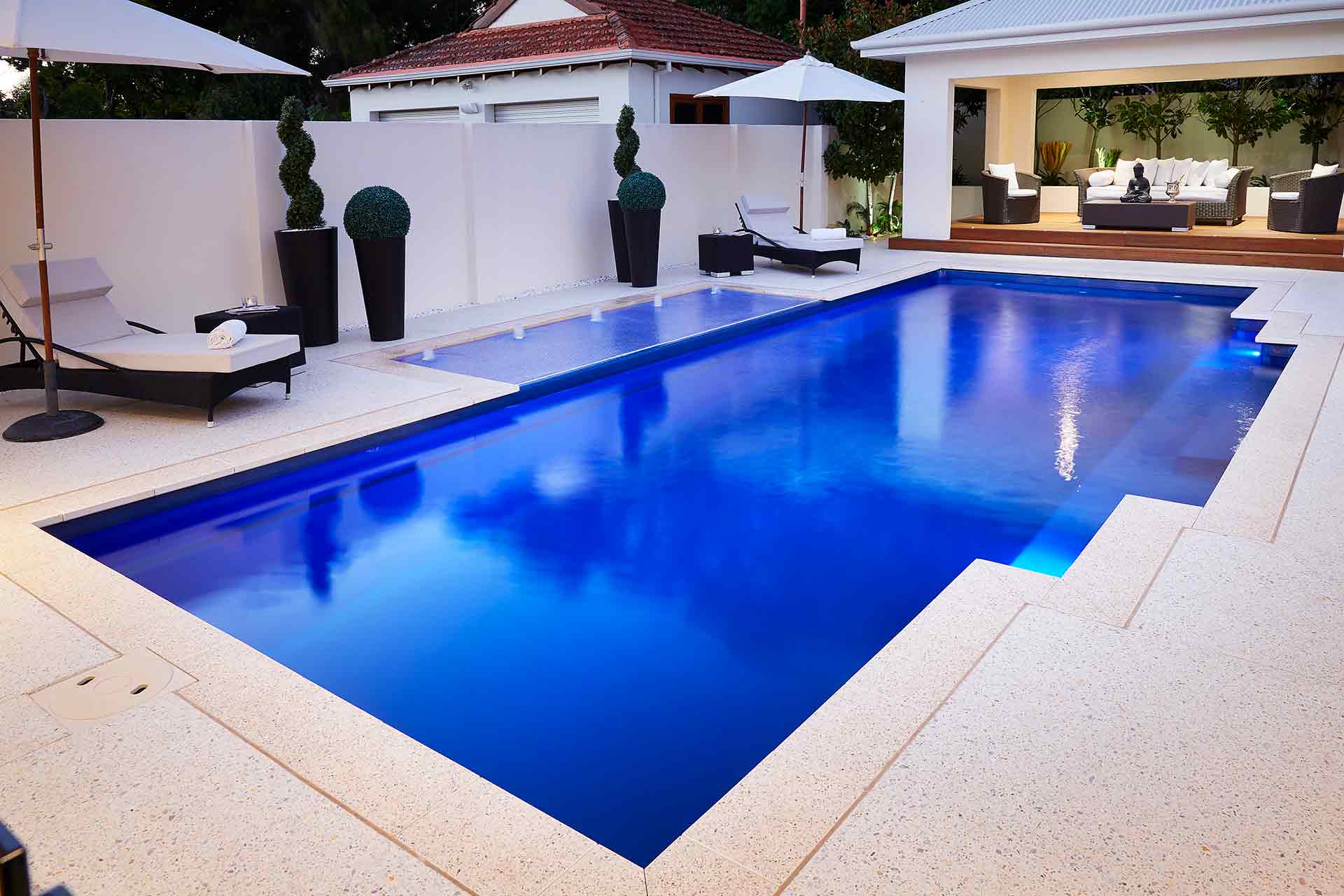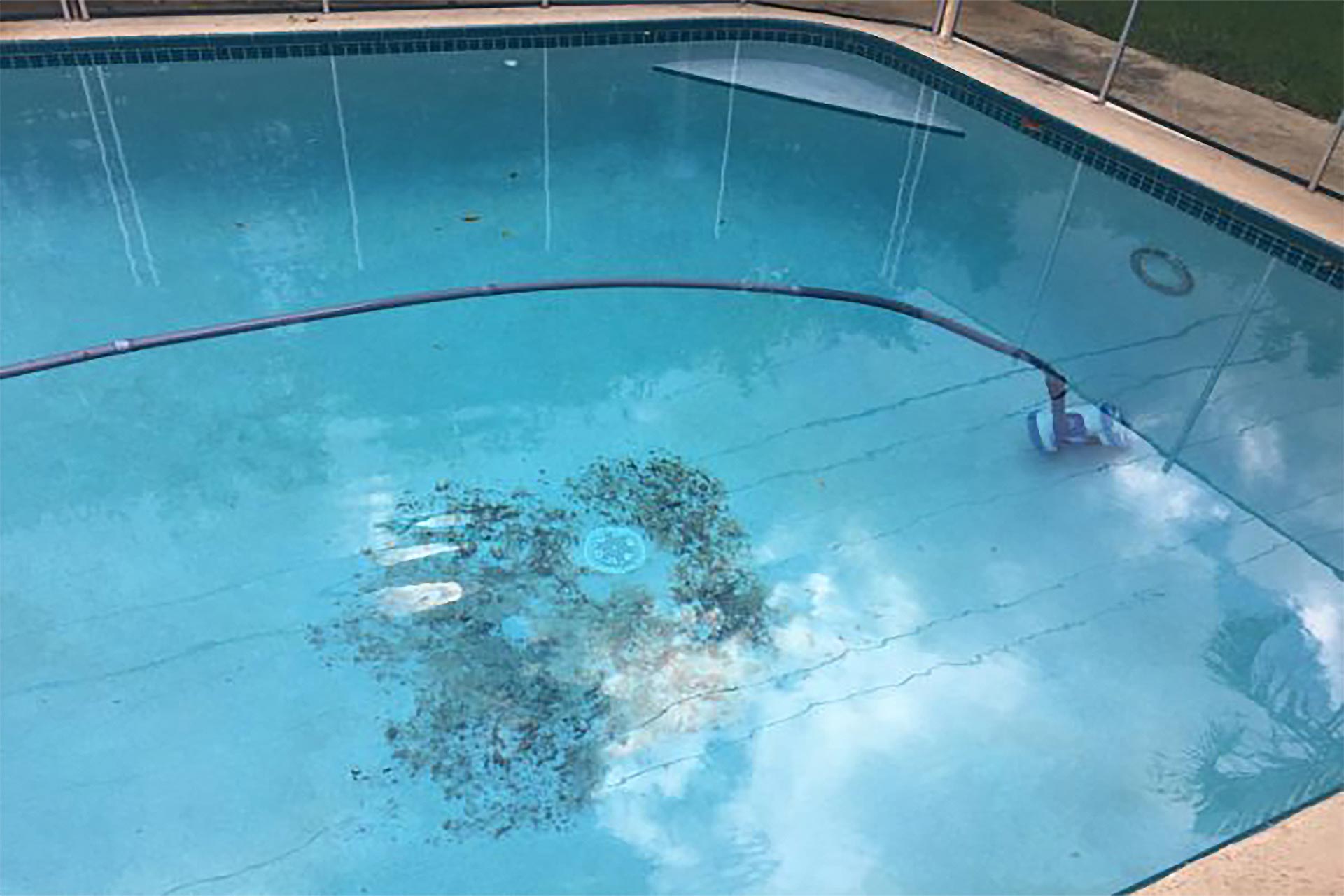How Do You Clean A Fibreglass Pool?
In the excitement of purchasing a pool, cleaning is a factor that is often overlooked. Pool maintenance goes hand in hand with pool ownership, but it doesn’t have to be a monotonous chore that chews up your free time. We have put together this simple guide to help you clean your fibreglass pool.

Skim The Water Of Leaf Litter And Debris
Regardless of whether you have trees or plants near your pool, it’s a given that leaf litter, dirt and insects will find its way to your pool water. These should be removed before they have a chance to sink to the bottom because once they do, they start decomposing and will throw out your pools pH level. The most effective way to do this is by purchasing a telescopic pole with a scoop net attachment. They are easy to use and inexpensive. If you have a lot of plants around your pool area, you may find you have to do this almost daily. To reduce the density of foliage falling into your pool, regularly trim trees and shrubs. While your skimmer will eliminate a portion of contaminants by drawing the surface water into it to filter, there will still be residual debris that it hasn’t picked up. Ensure you empty your skimmer basket when you are clearing the pool of leaves and dirt. You can do this by simply removing the basket, tapping the contents in the bin, rinsing with a hose to free small particles and replacing into position.
Balance The Pools Chemistry Levels
Up there with one of the most important components of pool care is balancing the water levels. The easiest way to do this is with a water testing kit. They are user friendly and you can usually get them for less than $50. Each kit contains testing strips and a colour graph, some come with small containers too. To test your water levels, it’s just a matter of collecting a sample of pool water, dipping a testing strip into it, removing, and comparing it to the graph provided on the bottle or in the pack. This will give you an instant indication of whether your levels are off or not. Ensure you have the necessary chemicals at home to treat your pool so if your levels are unbalanced you can see it quickly to prevent it affecting your water quality.
Clean Out Your Filter
While your skimmer basket will collect leaves and large debris from the water, the filter picks up finer particles of dirt from the water that would otherwise disrupt your chemical levels. They play a key role in keeping your water crystal clear and the cleaning technique will vary depending on which type of filter you have. There are three types of filters used in a pool filtration system. They include cartridge filters, sand filters and diatomaceous earth (DE Filters). To ensure you are protecting your equipment and cleaning it properly, you must follow the cleaning instructions as per your manual. If this is something you don’t feel comfortable tackling yourself, you can hire a professional pool cleaner to run you through the process or take over the pool maintenance for you altogether.
Vacuum The Pool
You have two choices when it comes to vacuuming your pool. You can do it manually by attaching a vacuum head to a telescopic pole and running it over every section of your pool to suck up dirt and debris or you can invest in an automatic pool cleaner which essentially does the job for you. While automatic cleaners are more of an outlay initially, the time saved on manually vacuuming the pool every week makes them a worthwhile investment.

Only Use Products Designed For Fibreglass Pool Use
Using the wrong chemicals to clean your pool can damage the interior surface and wear away at your equipment. For many, pools are a big home investment so, while there may be cheaper alternatives that claim to do the job, it is better to stick with products that are safe for fibreglass pools. This also ensures your swimmers are safe too.
Sanitiser
When residential swimming pools first came about, traditional chlorine was the only sanitising option available, today there are other choices such as salt and mineral, both are extremely popular. Many are surprised to discover that all types use chlorine to clean the water, they just use a lower dose. Your sanitiser works to eradicate algae and bacteria, it must be maintained at the correct level as too much can cause skin irritation and not enough won’t clean the water properly. The correct level of chlorine in a mineral pool should be around 0.05ppm, chlorine and salt pools need to be between 1-3 ppm.
Monitor The Surface For Stains
It’s a good idea to keep an eye out for stains and treat them as soon as you notice them. If they are left untreated for an extended period, they can be troublesome to remove, not only that they look unsightly too and can make your pool look dirty. Before attempting to remove the stain, you need to know what has caused it in the first place. The colour can give you an indication as to what type of material is the culprit. Here are some common examples:
• Grey stains – Magnesium
• Maroon stains – Iron
• Greenish/brown stains – Organic matter
• Turquoise – Copper
You can avoid stains by including a metal chelating agent into your monthly routine. If you already have light stains starting to form, use a soft sponge and detergent to shift it. If they are heavy stains, you will need to use a stain remover.

Top Your Pool Up
On occasion, you may notice your pool water level has dropped and more so in summer. Evaporation attributes to most of your pools water loss. The water should be halfway up to the skimmer box to ensure your pool’s equipment is doing its job properly. If it’s too full the skimmer is unable to draw water in to filter it and in this case, you will need to drain some water out. If it is too low, the skimmer will suck in air which can permanently damage your pool pump.
Purchase A Pool Cover
Pool covers are an effective way to reduce your pool maintenance. They prevent leaves and dirt from falling into your pool and they reduce chemical, heat, and water loss by 95%. This will save you a significant amount of time and money.
Set Up A Maintenance Schedule
One of the many great things about fibreglass pools is they are relatively easy to look after and you don’t have to dedicate a lot of time to pool maintenance. Set up a weekly schedule to complete the tasks mentioned above. This will ensure your pool equipment is kept in optimal working order and your water quality will be maintained at a safe and sanitary level, ready for you to swim in year-round. If you have any questions about cleaning your fibreglass pools or would like to speak to one of our team members here at Newcastle Swimming Pools, get in touch, we will happily assist if we can.
